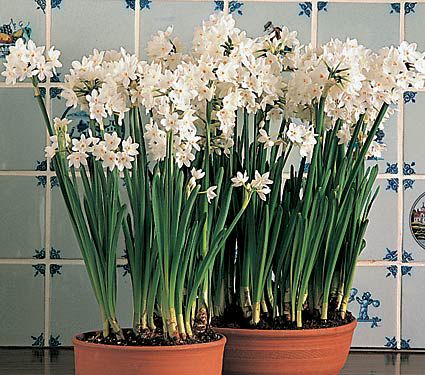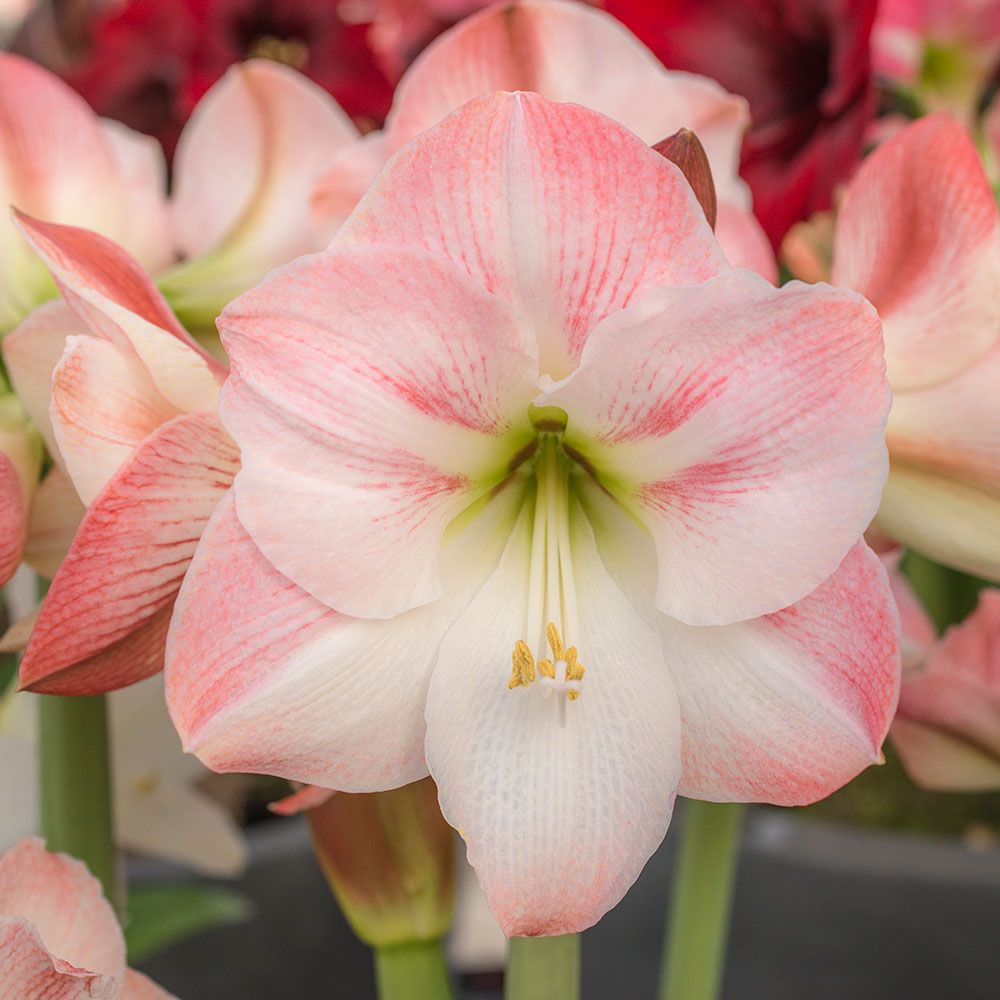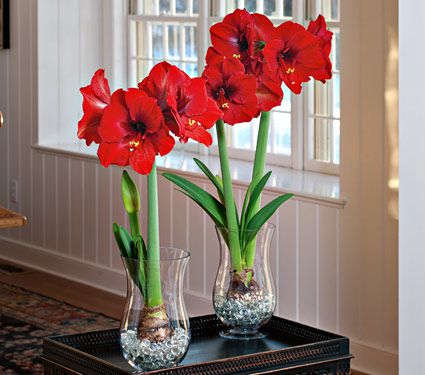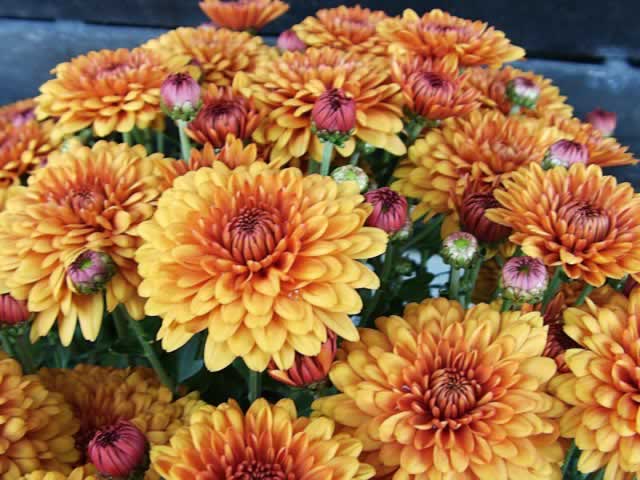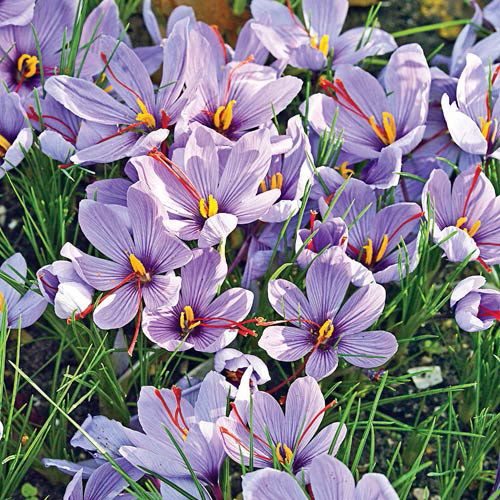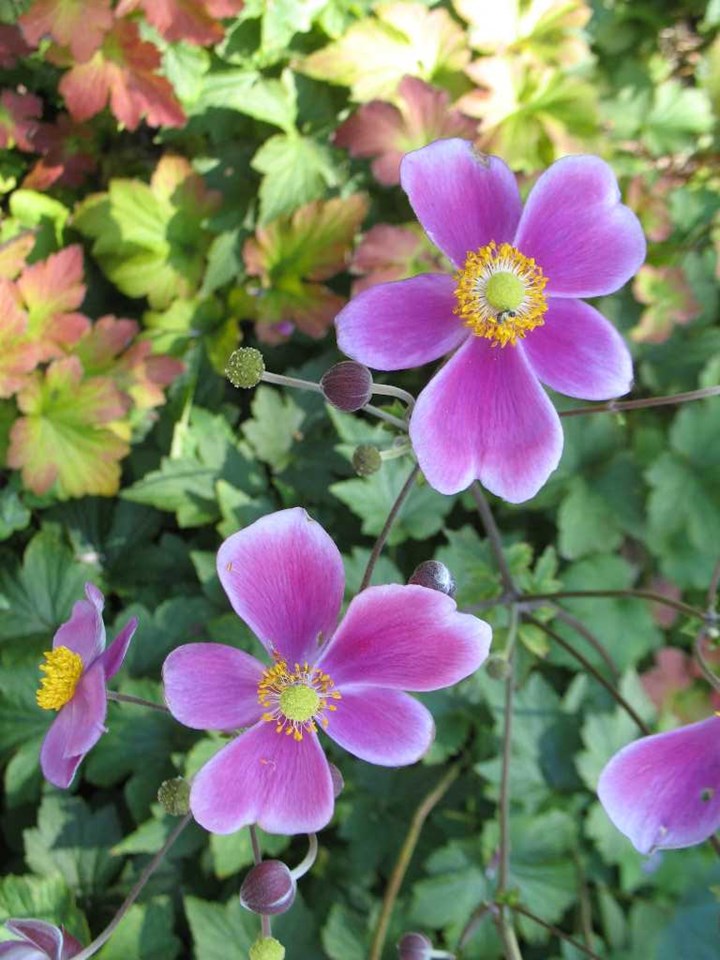
Welcome to Gardens By Danielle's blog! The blog will provide readers with tips and tricks for all things garden related, as well as give timely tips once a month. We hope you enjoy it!
Timely Tips...
In the Philadelphia area, its time to start putting your garden to bed for the winter. This means pulling up annuals and cutting back perennials to the ground. The annuals and perennials will die back in the next couple of weeks after we start getting hard frosts. Some people prefer to leave the perennials until the spring and then cut back the old, dead growth then. You'll also want to spread leaves or compost over your vegetable garden and other garden beds. Some people prefer to put mulch down instead, but this is not completely necessary.
This month, its also time to start forcing flower bulbs indoors. Some of the most popular bulbs for forcing indoors are Paperwhites and Amaryllis. When started now, they will bloom in time for the holidays. Some people also like to force spring blooming bulbs like, Daffodils, Tulips, Hyacinths, Crocus, and Iris indoors also. Spring blooming bulbs need to be pre-chilled for several weeks before being forced indoors. This fools the plant into thinking its spring, so it will then bloom indoors during the winter. These bulbs can then be planted outside in the spring.
Paperwhites and Amaryllis don't require pre-chilling since they are tropical. Paperwhites are tall and thin with lots of small, white, daffodil-like flowers that are fragrant. Amaryllis have 1-2 stalks with 4 large flowers per stalk. They come in orange, pink, red, white and bicolors. Amaryllis and Paperwhite both need to be staked when they get tall or they can tip or lean over. Paperwhites bloom 4-6 weeks after being planted and Amaryllis bloom in 8-10 weeks after planting.
Paperwhites can be planted in soil or in a vase in fine river stones or gravel. They need to be planted with their crowns exposed if planted in gravel. Place them in a sunny window and water whenever the soil dries out. If the Paperwhites are planted in gravel, keep the water level up to the bottom of the bulbs.
Paperwhites (Photo Courtesy of White Flower Farm)
Amaryllis can also be planted in soil or river gravel. When Amaryllis are planted in soil or river stones, they should only be buried with their crowns and 1/4 from the top of the crown exposed. Some of my favorite cultivars are 'Apple Blossom' and 'Ferrari.' 'Apple Blossom' has blooms that are a light pink and white. 'Ferrari' has bright cherry red blooms. Amaryllis should only be watered when they dry out almost completely when planted in soil and the water level should be maintained right under the surface of the stones when grown in stones. Don't overwater or the bulbs will rot. Amaryllis bulbs will re-bloom next year if treated in a certain manner after blooming or you can start with new bulbs every year.
Amaryllis 'Apple Blossom' (Photo Courtesy of: White Flower Farm)
Amaryllis 'Ferrari' (Photo Courtesy of: White Flower Farm)
I hope these tips help to bring some color and beauty during the dark, grey days of winter.
Timely Tips...
This time of year, gardens often start looking tired as the blooms of summer fade and die back. It's the end of the growing season for a lot of summer blooming plants. Fortunately, there are bulbs, annuals, and perennials that bloom in the fall and thrive in the cooler air. In this post, I will talk about some common (and maybe not so common) fall blooming annuals, perennials, and bulbs to add color to your garden during the cooler months of fall.
Annuals:
Viola x wittrockiana- Pansy- This annual is a member of the Violaceae (Violet) family and thrives in cool weather. It flowers throughout the fall until the first heavy frost. Flowers can be single or double and come in blue, purple, red, rose, yellow, apricot, maroon, white and bicolors. Pansies grow to 1/2-3/4" tall with a spread of 3/4"-1'. They thrive in full sun to part shade, attract butterflies and are edible. These colorful bedding plants are great for planting in the ground or containers.
Viola x wittrockiana- Pansy (Photograph Courtesy of: Missouri Botanical Garden)
Brassica oleracea- Ornamental Cabbage- Ornamental or Flowering Cabbage adds great color to the fall garden and thrives in cooler weather. It grows to a height of 1-1 1/2' tall and a spread of 1-1 1/2'. Plants are green, white, and different shades of pink and purple. They thrive in full sun and are great in the ground or seasonal containers.
Brassica oleracea- Ornamental Cabbage (Photograph Courtesy of: Missouri Botanical Garden)
Dendranthema x grandiflora- Chrysanthemum- Chrysanthemum, commonly called "Mums" are great plants for the fall garden or containers. They are bushy plants, full of small-large, daisy-like blooms, The flowers come in brown, red, white, yellow, pink, and red-orange. Other benefits of mums is that they attract butterflies and can be used for cut flowers. Mums grow to 1-2' tall and have a spread of 1-2'. These fall beauties grow well in part sun to part shade. Note: There are also perennial varieties, too.
Dendranthema x grandiflora- Chrysanthemum (Photograph Courtesy of: The Garden Helper)
Bulbs:
Colchicum byzantium- Autumn Crocus- When most people think of crocus, they think of bulbs that bloom in early spring, but there are also crocuses that bloom in the fall also. Crocus come in varying shades of pink and purple and bloom September-October. They grow to a height of 1/4-1/2" tall and have a 1/4-1/2" spread. These bulbs grow best in full sun to part shade and need to be planted in August.
Colchicum byzantium- Autumn Crocus (Photograph Courtesy of: Breck's)
Cyclamen hederiflolium- Hardy Cyclamen- Cyclamen are often thought of as an indoor plant that are grown in greenhouses and windowsills, but there is a variety of cyclamens that thrives in this area. This variety comes back every year and blooms in the fall. These beauties grow to a height of 4-6" and do well in part to full shade. The blooms come in colors of rose-pink and the foliage is heart shaped. Great for shade gardens!
Cyclamen hederifolium- Hardy Cyclamen (Photograph Courtesy of: Breck's)
Perennials:
Symphyotrichum novae-angliae- New England Aster- This type of Aster is native to this area and blooms August-September. The blooms are daisy-like and a deep pink-purple color. They grow to 3-6' in height and have a spread of 2-3'. New England Aster requires full sun and attracts butterflies.
Symphyotrichum novae-angliae- New England Aster (Photograph Courtesy of: Missouri Botanical Garden)
Anemone hupehensis- Japanese Anemone- These lovely flowers grow to a height of 2-3' tall and have a 2-3' spread. Japanese Anemone bloom August-September and the petals are rose-pink with yellow centers. They require full sun to part shade.
Anemone hupehensis- Japanese Anemone (Photograph Courtesy of: Missouri Botanical Garden)
I hope these plants help to brighten your garden this fall and keep your spirits up with summer being over. Stay tuned for the next post.
Sources:
Missouri Botanical Garden: Plant Finder. www.missouribotanicalgarden.org
Dendranthema x grandiflora: Chrysanthemum. University of Florida IFAS Extension. Edward F . Gillman. Copyright: October 1999. 7, September 2017.
Breck's. www.brecks.com


